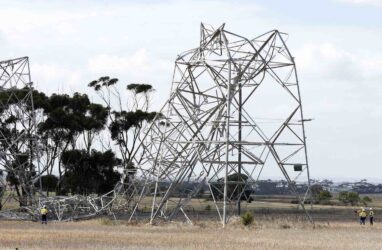Feed aggregator
Indonesia inks mutual recognition agreement with Gold Standard, arrangement with Norway to be finalised soon
‘Astonishing journeys’: online tool tracking migratory animals highlights challenge of protecting them
The University of Queensland system is intended to give policymakers idea of how species traverse the oceans and what it will take to save them
Off the east coast of Florida, female loggerhead turtles swim more than 1,000km north, hugging the edge of the continental shelf to get to feeding grounds.
Humpback whales move through Moreton Bay off the Brisbane coast in Australia, on their way to feed around the Balleny Islands more than 4,000km away off the Antarctic coastline, where wandering albatross circle above, travelling 1,000km a day.
Get Guardian Australia environment editor Adam Morton’s Clear Air column as an email
Continue reading...CF TURKIYE: Turkiye likely to turn to free allocation before domestic CBAM, expert says
Indonesia launches UN-backed forest and peatland conservation programme
FEATURE: Readiness, scale biggest barriers for Article 6 in the Pacific
ANALYSIS: ACCU market caught between jubilation and frustration following election
Ammonia key to cutting Scope 3 emissions, oil and gas chairman says
ExxonMobil to supply Japanese trading house with low-carbon ammonia
Even as emissions level off, carbon dioxide in the atmosphere is growing faster than ever. Here’s why
Dropping the ball on green hydrogen means counting on gas for iron and steel – and that’s a major risk
The post Dropping the ball on green hydrogen means counting on gas for iron and steel – and that’s a major risk appeared first on RenewEconomy.
Indigenous groups want equity over ‘engagement’ in future carbon projects, conference hears
Solar Insiders Podcast: How to make the most out of home batteries
The post Solar Insiders Podcast: How to make the most out of home batteries appeared first on RenewEconomy.
Australian politics loses climate warrior as Greens leader Adam Bandt concedes “purple” defeat
The post Australian politics loses climate warrior as Greens leader Adam Bandt concedes “purple” defeat appeared first on RenewEconomy.
PREVIEW: Carbon market participants flag concerns over draft PACM standards ahead of key Article 6 methodology meeting
Offshore wind sector rocked by shelving of huge government-backed project as costs rise
The post Offshore wind sector rocked by shelving of huge government-backed project as costs rise appeared first on RenewEconomy.
South Korea blue carbon target attainable with seaweed restoration efforts -study
Huge data centres queue to join Australia’s grid, but not where wind and solar industry wants them
The post Huge data centres queue to join Australia’s grid, but not where wind and solar industry wants them appeared first on RenewEconomy.
Rare New Zealand snail filmed laying egg via its neck for first time
Mount Augustus snail, among largest in world, can live for decades and eats slugs and earthworms
A large rare carnivorous New Zealand snail has been filmed laying an egg from its neck for the first time, in a delightfully icky stroke of luck.
The department of conservation, which has been managing a captive population of Powelliphanta augusta, or the Mount Augustus snail, for almost two decades, was undertaking a routine weight check when a small, white egg started emerging from a snail’s neck.
Continue reading...New rule to encourage networks to make poles and wires resistant to storms and climate risk
The post New rule to encourage networks to make poles and wires resistant to storms and climate risk appeared first on RenewEconomy.
Rare large carnivorous New Zealand snail filmed for the first time laying egg from its neck – video
The New Zealand Department of Conservation, which has managed a captive population of Powelliphanta augusta since 2006, was undertaking a routine weight check when a small, white egg started emerging from a snail’s slimy neck. The land snails, otherwise known as the Mount Augustus snail, are found only in New Zealand and are among some of the largest in the world. They are slow-growing and can live for decades.
Continue reading...








